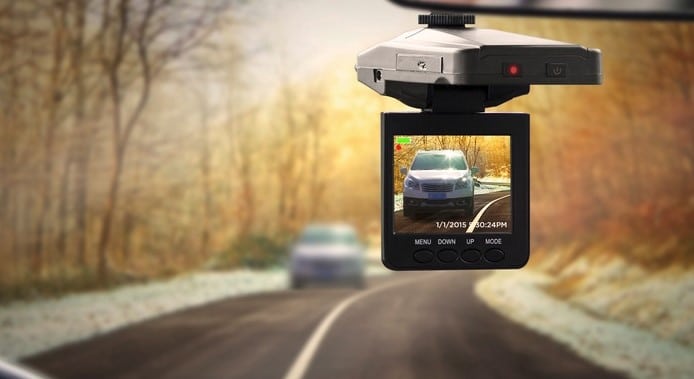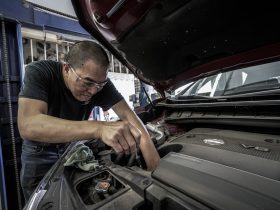If you manage an extensive fleet of vehicles and have not invested in dashcams yet, now might be the time to do so. Dashboard cameras enable you to have a robust security program for your fleet and generate a measurable return on investment for your business.
Three reasons to invest in dashcams:
- 87% OF COMMERCIAL COLLISIONS ARE DUE TO AVOIDABLE DRIVING ERRORS
- 60% DECREASE IN COLLISION FREQUENCY WHEN USING A CAR CAMERA
- 86% DECREASE IN ACCIDENT-RELATED COSTS WHEN USING CAR CAMERAS
What are dash cams?
Dash cameras, also known as “dashcams” or “in-car cameras,” are an extremely effective safety tool for commercial fleets. From advising drivers to exonerating your company of false claims, these cameras are helpful in several ways to upgrade the safety of your fleet and reduce costs.
How dash cams work
Dash cameras are small cameras installed inside a vehicle to capture video of the road in front of the car and activity inside the cabin. The best car cameras are connected to a telematics solution with a “g” force sensor to detect movement. The system can automatically detect safety-related events – such as hard braking, sharp turns, and collisions – and upload the video from incidents to the cloud.
Many different types of car cameras are for various purposes. Still, in general, fleets install dash cameras because they seek to improve their visibility of road safety and have videos that they can use to forgive innocent drivers in case of an accident.
The benefits of in-car cameras to fleet
Before diving into the various types of dash cameras, it’s essential to take a step back and understand why fleets invest in this technology.
Avoid false claims
In car-truck accidents, trucks are only 26% times at fault, but they often face harsh consequences. Internet-connected car cameras can automatically upload the accident video to the cloud in minutes, making it easy to forgive innocent drivers right on the spot, avoid lengthy claims processes, and eliminate unnecessary payments.
Reduce insurance costs
When it comes to insurance, safety is an essential factor. Because dash cameras are proven to improve safety and mitigate risk, your insurance company may offer you a premium discount, credit, or subsidy for installing in-car cameras and sharing safe driving data.
Reduce vehicle wear
Harsh braking wears down the brakes and puts unnecessary stress on vehicles. In combination with a telematics system, dash cameras can play audio messages in the cabin when safety-related events are detected, helping to discourage rough driving, reduce physical damage, and reduce maintenance costs.
Minimize labor costs
It may be surprising, but dash cameras can cut costs in many ways. Using driver safety score rankings and video-based coaching tools, your back office team can coach drivers more efficiently. Additionally, in-car cameras enable you to create a robust rewards program, increasing engagement and retention, reducing employee turnover and hiring costs.
Different configurations of dash cams
- FORWARD-FACING
- WITH DOUBLE ORIENTATION
- EXTERIORS
- INTERIORS
Forward-facing dash cameras (or front-facing cameras) are mounted on your windshield and have a lens focused toward the road in front of the vehicle. They perfect to capture collisions. Many fleets choose to have forward-facing cameras because they want video footage to advise and exonerate drivers but are concerned about gaining driver buy-in. These dash cameras do not record the cabin’s interior, so they are ideal for fleets concerned about the driver’s privacy.
Top 10 key features of in-car cameras
After you decide which configuration best suits your needs, you can now consider the range of functionality available. From artificial intelligence (AI) to night vision, these are essential features to consider.
- Artificial Intelligence: The most advanced dash cameras include built-in Artificial Intelligence (AI) to detect incidents without a g-force, such as missed stop signs or distracted drivers. AI makes it possible to train drivers on risky or near-crash habits.
- Vast Memory: Most dash cameras have a micro SD card or memory cards that store videos locally.
- Severe Incident Detection: The best dash cameras use a gyroscope and accelerometer to automatically detect severe incidents, such as hard braking or crashes, and automatically upload a video to the cloud.
- Resolution: The resolution (or image quality) depends on how many pixels the camera can record. Front dash cameras should record high-definition video in 1080p, making it possible for you to see the road ahead clearly and see the numbers on the license plates.
- Field of view: Field of view is how much the camera can see out of the way (or inside the cab). To ensure that your dashcam captures a broad view, look for a wide-angle or semi-angled lens.
- Mounting: The two most popular ways to install dash cams are via a suction mount or adhesive. Some cameras may also snag on the rearview mirror. Adhesive mounts, in general, are a safer option that offers quick and easy installation.
- Loudspeaker and audio recording: Some cameras include a loudspeaker that can reproduce verbal or tone audios to alert the driver of a reckless habit, such as using the telephone or speeding. You may also have the option of activating cockpit audio recordings during those security events.
- Night vision: Some cameras are optimized to capture video at night or in low light conditions. If your drivers operate at night, look for a camera with HDR, optimizing images in bright and low light or with infrared LEDs, which is especially important for capturing video in dark cabins.
- Robust Model: Dash cameras designed for commercial fleets are more robust, both in terms of the value they can provide and the features they offer. In-car cameras specifically designed for commercial fleets, such as Nextbase in-car cameras, connect to WiFi and detect safety-related events such as sudden braking, speeding, and collisions.
- Automatic Cloud upload: In-car cameras can automatically upload videos of safety-related events to the cloud, making it easier for back-office staff to review and advise drivers effectively.







